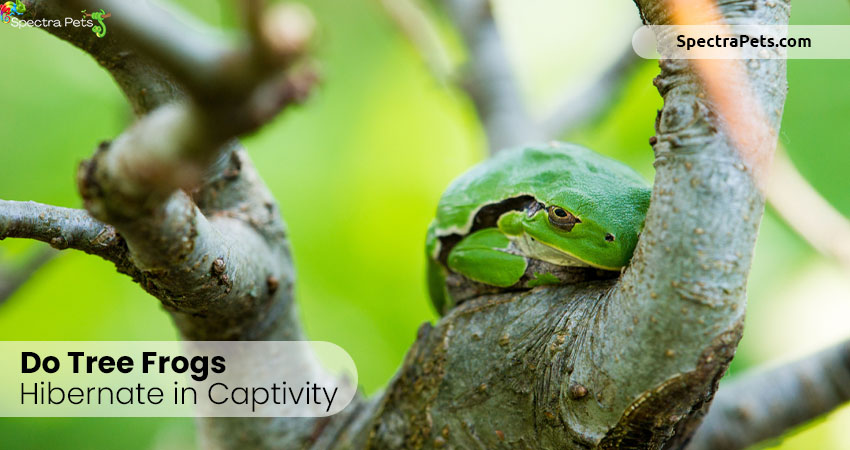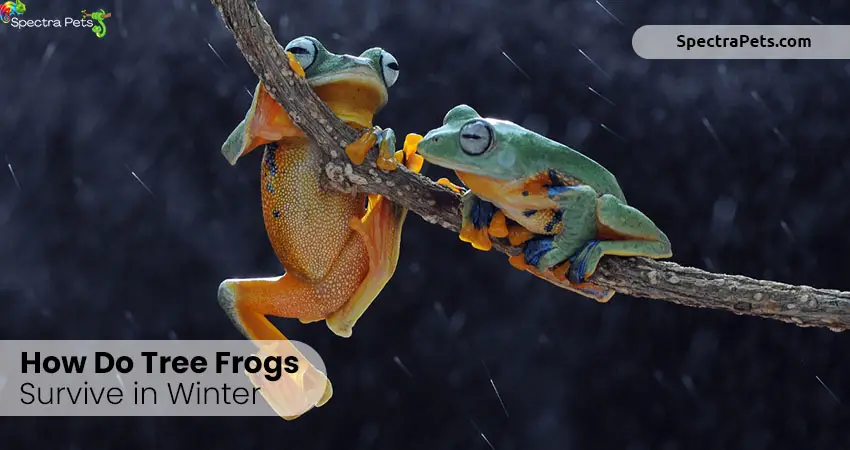
Young are aquatic (live in water) and will take shelter under leaf litter and debris if a predator (animal that eats them) or threat is nearby.During dry seasons, they will take shelter in knotholes of trees.They spend most of their time perched high in the trees but will rest in logs and hollow trees.Live and take shelter in wooded areas near sources of fresh water such as swamps, ponds, lakes, old fields, and forests.Young are aquatic and live in fishless ponds.
 Prefer to live near standing or still water which keeps their bodies moist and hydrated. Filter food from the water column or scrape algae and detritus (dead organic material) from aquatic plants. Feed on larval and adult invertebrates (animals without a backbone) including moths, mites, spiders, and snails. Mainly carnivores (eats other animals). They also have teeth on the roof of their mouth to help prevent the prey from escaping once captured. Once the prey is captured, they use their strong tongues to flip the prey into their mouths. They sit on a branch or vertical surface, relying on camouflage (blending in to their surroundings) while waiting for an animal they can eat to come near them. Cope's gray tree frogs are sit-and-wait predators that wait for prey (animals they can eat) to come near them rather than actively hunting.
Prefer to live near standing or still water which keeps their bodies moist and hydrated. Filter food from the water column or scrape algae and detritus (dead organic material) from aquatic plants. Feed on larval and adult invertebrates (animals without a backbone) including moths, mites, spiders, and snails. Mainly carnivores (eats other animals). They also have teeth on the roof of their mouth to help prevent the prey from escaping once captured. Once the prey is captured, they use their strong tongues to flip the prey into their mouths. They sit on a branch or vertical surface, relying on camouflage (blending in to their surroundings) while waiting for an animal they can eat to come near them. Cope's gray tree frogs are sit-and-wait predators that wait for prey (animals they can eat) to come near them rather than actively hunting.  Each species of frog has a unique sound, allowing females to determine if they are approaching members of the same species. During the breeding season, male Cope's gray tree frogs sit perched high in the trees and make a high-pitched trill sounding noise that the females recognize. They emerge and become active when the weather is warm and food sources become available.Ĭope's gray tree frogs communicate with one another:. Their breathing and heartbeat are temporarily stopped during this state. Prior to hibernation, they produce a liquid called glycerol in their blood which lowers their freezing point. Adults enter this state on land and can be found under decaying logs or leaf litter. During cold winter months, it protects itself by hibernating or becoming dormant as if it is in a deep sleep. The Cope's gray tree frog is cold-blooded and does not produce its own body heat. They use these teeth to keep their prey(the animals they eat) from escaping while they can swallow them. Cope's gray tree frogs have teeth in the middle of the roof of their mouth and in the front of the top of the mouth. Once the animal is inside the frog's mouth, the frog uses its eyes to push against the food item to help release it from the tongue, allowing the frog to swallow its food.Ĭope's gray tree frogs have teeth to hold their prey in their mouths:. As a frog sticks out its tongue to capture prey (animal that it eats), the liquid saliva that surrounds the animal becomes thicker and stickier, trapping the animal. When a frog is at rest, the saliva is watery and not sticky. Instead, their saliva is able to convert back and forth between a liquid watery texture and a thick, sticky texture. Their tongues are not "sticky" like a piece of tape. Frog tongues are made of extremely soft tissues, giving them the ability to hold on to the prey.
Each species of frog has a unique sound, allowing females to determine if they are approaching members of the same species. During the breeding season, male Cope's gray tree frogs sit perched high in the trees and make a high-pitched trill sounding noise that the females recognize. They emerge and become active when the weather is warm and food sources become available.Ĭope's gray tree frogs communicate with one another:. Their breathing and heartbeat are temporarily stopped during this state. Prior to hibernation, they produce a liquid called glycerol in their blood which lowers their freezing point. Adults enter this state on land and can be found under decaying logs or leaf litter. During cold winter months, it protects itself by hibernating or becoming dormant as if it is in a deep sleep. The Cope's gray tree frog is cold-blooded and does not produce its own body heat. They use these teeth to keep their prey(the animals they eat) from escaping while they can swallow them. Cope's gray tree frogs have teeth in the middle of the roof of their mouth and in the front of the top of the mouth. Once the animal is inside the frog's mouth, the frog uses its eyes to push against the food item to help release it from the tongue, allowing the frog to swallow its food.Ĭope's gray tree frogs have teeth to hold their prey in their mouths:. As a frog sticks out its tongue to capture prey (animal that it eats), the liquid saliva that surrounds the animal becomes thicker and stickier, trapping the animal. When a frog is at rest, the saliva is watery and not sticky. Instead, their saliva is able to convert back and forth between a liquid watery texture and a thick, sticky texture. Their tongues are not "sticky" like a piece of tape. Frog tongues are made of extremely soft tissues, giving them the ability to hold on to the prey.  The tongue of a Cope's gray tree frog is long and is attached at the front of the mouth, allowing it to launch as far as possible to capture prey (animals they eat). In humans, it can irritate the eyes, lips, inside of the noes, and open cuts or scrapes.Ĭope's gray tree frogs have tongues that help them capture prey:
The tongue of a Cope's gray tree frog is long and is attached at the front of the mouth, allowing it to launch as far as possible to capture prey (animals they eat). In humans, it can irritate the eyes, lips, inside of the noes, and open cuts or scrapes.Ĭope's gray tree frogs have tongues that help them capture prey: Do pet tree frogs hibernate skin#
Adults produce a toxin (poison-like substance) that seeps through their skin and irritates predators that capture them.Their body color responds to changing temperatures and activity, allowing them to appear green, brown, light gray, and white.To avoid predators (animals that eat them), Cope's gray tree frogs rely on camouflage (blending in with the surrounding environment).







 0 kommentar(er)
0 kommentar(er)
